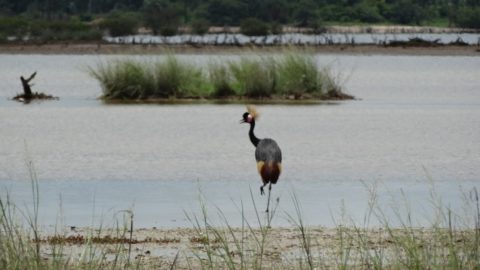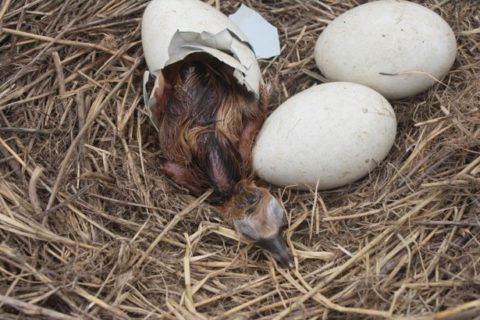On the sidelines of the 14th edition of the Pan-African Ornithological Congress (PAOC14) held in Dakar from 16th to 21st October 2016, the study on ” The Reproduction of Crowned Crane Balearica pavonina pavonina in Casamance’’, Senegal, was presented to the public. Recommendations such as developing specific management plans and improving the protection status of the species and mangrove restoration and management of salinization Marigot Baïla among others, have been made.
As part of the Project ”Conservation of Black crowned crane in West Africa”, executed in 2014 by Wetlands International and BirdLife International and funded by Zoological Society / Chester Zoo and Mava Foundation, this research study on ecology of the species, aimed to characterize crowned Crane’s habitat, identify, count and monitor its activities but also to monitor its reproduction in order to see the threats on it.

The study conducted at Baïla and Koussabel, two villages in Bignona department, in Casamance, the southern region of Senegal shows that the dominant functions of the site for the crane are foraging, reproduction and rest.
It also provides information that Avicennia africana and Adansonia digitata are the dominant woody flora habitat of crowned crane while Sporobolus robustus and Sesuvium portulacastrum remain the dominant non-woody plants in the habitat of the bird.
The research study also indicates that a total of 32 eggs monitored at both sites, there has been a hatching rate of 62.5% with the birth of 20 chicks.

However as revealed by the study, some threats are noted on the species. These are: human impact, the gradual salinization of the Casamance River, shrinking vegetation cover, which leads to a sharp deterioration of breeding sites (mangrove) despite the sacred link between the crowned crane and Casamance local communities.
Recommendations have been made. Among them, we can note: developing specific management plans and improve the protection status of the species, restore mangrove and manage salinization Baïla Marigot and finally conduct an awareness campaign, environmental education and monitor continuous habitat.
Finally, perspectives are announced for better conservation of the black crowned crane and its habitat. Those are: the location of other nesting sites and their rehabilitation if necessary, the establishment of community conserved areas at Baïla and Koussabel, the study of relationships between the crowned cranes and people of southern Senegal and contribution to the implementation of the National Plan on crowned Crane.

This study on ”The Reproduction of Crowned Crane Balearica pavonina pavonina in Casamance was presented on the sidelines of PAOC 14 by Ms. Inna Sane Dounkhassy who presented in June 2016 her Master II Memory at the Animal Biology Department, Faculty of Science and Technology of Cheikh Anta Diop University in Dakar with honors awarded by the Jury. Sponsored by Wetlands International and BirdLife International, she was mentored by Dr. Sega Moussa Diop, Mr. Idrissa Ndiaye and Mr. Tim Dodman.